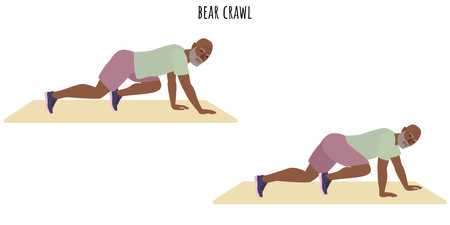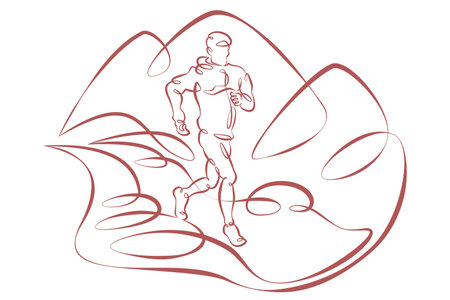1. Why Strength Training Matters for Hikers
If you love hitting the trails, you probably already know that hiking is more than just a walk in the park—especially on tough routes with steep climbs and rocky paths. That’s why strength training is a game-changer for hikers of all levels. Let’s break down why building muscle matters when you’re out on the trail.
Injury Prevention
Hiking puts a lot of stress on your knees, ankles, hips, and back. By strengthening your muscles, especially those around your joints, you can protect yourself from common injuries like sprained ankles, sore knees, or pulled muscles. Think of strong legs as shock absorbers—they help cushion each step and keep you steady even on uneven ground.
Common Hiking Injuries vs. How Strength Training Helps
| Common Injury | How Strength Training Helps |
|---|---|
| Knee Pain | Stronger quads and glutes take pressure off your knees |
| Ankle Sprains | Improved balance and stronger calves support your ankles |
| Lower Back Pain | A solid core supports your spine and keeps your posture in check |
Improved Endurance
The longer and steeper the hike, the more endurance you need. Strength training helps build muscle stamina so your legs don’t get tired as quickly. You’ll be able to climb hills, cross streams, and carry your backpack without feeling wiped out halfway through your adventure.
Increased Confidence on Challenging Terrain
Knowing you have the strength to tackle whatever the trail throws at you does wonders for your confidence. Whether it’s scrambling over rocks or powering up switchbacks, strong muscles mean you’ll feel ready for anything—even those intimidating mountain ascents common in America’s national parks!
Quick Benefits Checklist for Hikers Who Strength Train:
- Less risk of getting hurt on rough or slippery trails
- Bigger energy reserves for longer hikes
- Better balance and stability when crossing tricky spots
- More confidence when facing new or challenging hikes
- Easier recovery after big adventures outdoors
Ready to level up your trail game? In the next section, we’ll dive into specific exercises every hiker should add to their routine!
2. Leg and Core Exercises for Trail Power
When you’re hitting the trail, strong legs and a solid core are your best friends. They help you power up steep hills, balance on rocky paths, and carry your backpack with ease. Here are some essential strength training exercises every hiker should include in their routine:
Squats: The Foundation of Lower Body Strength
Squats work your quads, glutes, hamstrings, and even your core. Whether you’re climbing or descending, these muscles do most of the heavy lifting on the trail. To do a basic squat, stand with feet shoulder-width apart, bend your knees like you’re sitting back into a chair, then push through your heels to stand back up. Try adding weight or doing single-leg squats as you get stronger.
Benefits for Hikers
- Builds uphill power
- Improves endurance
- Reduces risk of knee injuries
Lunges: Step Up Your Stability
Lunges target your legs and hips while challenging your balance—key for navigating uneven terrain. Step forward with one leg and lower down until both knees are bent at 90 degrees. Push back to standing and repeat on the other side. You can also try walking lunges or reverse lunges for variety.
Benefits for Hikers
- Boosts balance and stability
- Mimics the step-up motion of hiking
- Strengthens hip flexors for better stride
Planks: Core Stability for Every Trail
Your core does more than just give you good posture—it keeps you steady when the trail gets rough. Planks engage your abs, lower back, and shoulders all at once. Start in a push-up position but rest on your forearms instead of your hands. Keep your body straight from head to heels and hold as long as you can.
Benefits for Hikers
- Supports heavy backpacks
- Prevents lower back fatigue
- Keeps you upright on tricky descents
Quick Reference Table: Key Exercises for Trail Power
| Exercise | Main Muscles Worked | How It Helps Hikers |
|---|---|---|
| Squats | Quads, Glutes, Hamstrings, Core | Powers climbs & descents; knee protection |
| Lunges | Quads, Glutes, Hamstrings, Hip Flexors | Stability on uneven ground; mimics hiking steps |
| Planks | Core (Abs & Back), Shoulders | Packs support; reduces injury risk; balance aid |
Pro Tip:
If you’re new to these exercises, start with bodyweight only and focus on good form. Gradually add reps or resistance as you gain confidence and strength. Consistency is key—try doing these moves 2-3 times a week for best results.

3. Upper Body Moves for Backpacking and Balance
When youre hiking, your upper body does a lot more than just carry a backpack. Strong arms, shoulders, and back muscles help you handle trekking poles, steady yourself on tricky terrain, and power through steep ascents. Here are some essential upper body exercises that every hiker should add to their training routine.
Push-Ups: Building Functional Strength
Push-ups are a classic move that never go out of style. They work your chest, shoulders, triceps, and core all at once—perfect for hikers who need to lift packs or push themselves up rocky steps. Start with standard push-ups, and if theyre too tough, drop to your knees until you build more strength.
How to Do a Proper Push-Up:
- Place your hands slightly wider than shoulder-width apart on the ground.
- Keep your body in a straight line from head to heels.
- Lower yourself until your chest nearly touches the floor, then push back up.
- Aim for 2-3 sets of 8-15 reps.
Rows: Strong Back for Heavy Packs
Rows are key for strengthening your back and improving posture—important when you’re carrying a loaded pack on long treks. You can do rows using dumbbells, resistance bands, or even by pulling yourself up on a sturdy table edge at home.
Dumbbell Bent-Over Row:
- Hold a dumbbell in each hand, bend forward at the hips with a flat back.
- Pull the weights toward your waist, squeezing your shoulder blades together.
- Lower slowly and repeat for 2-3 sets of 10-12 reps.
Shoulder Workouts: Stability for Poles and Climbing
Your shoulders take on a lot of work when you use trekking poles or scramble over rocks. Strengthening them helps prevent injuries and gives you better control on the trail. Try these simple moves:
| Exercise | Main Muscles Worked | How Often |
|---|---|---|
| Dumbbell Shoulder Press | Shoulders (Deltoids), Triceps | 2-3 sets of 8-12 reps, twice a week |
| Lateral Raises | Side Shoulders (Lateral Deltoids) | 2-3 sets of 10-15 reps, twice a week |
| Front Raises | Front Shoulders (Anterior Deltoids) | 2 sets of 10-12 reps, twice a week |
Tips for Safe Upper Body Training:
- Focus on form first—quality over quantity!
- Add weight gradually as you get stronger.
- Don’t forget to stretch after workouts to keep your muscles flexible and healthy.
The right upper body training will make carrying gear easier and help you stay balanced on challenging hikes. Incorporate these exercises into your weekly routine and youll notice real improvements next time you hit the trail!
4. Functional Training: Mimicking Trail Challenges
If you want to truly prepare for hiking adventures, it’s important to train your body in ways that reflect what actually happens on the trail. Functional training focuses on dynamic exercises that imitate real-life movements—think stepping over rocks, balancing on uneven ground, or scrambling up steep slopes. By adding these exercises to your routine, you’ll boost your agility, coordination, and resilience, making every hike feel a little easier.
Why Functional Training Matters for Hikers
Hiking isn’t just about walking straight ahead—it’s about reacting quickly to changing terrain. Whether it’s jumping across puddles or ducking under branches, functional training preps your body for all those unpredictable trail moments. Plus, it helps prevent injuries by strengthening the muscles and joints you depend on most.
Top Functional Exercises for Hikers
| Exercise | How It Helps | Pro Tip |
|---|---|---|
| Lateral Lunges | Improves side-to-side movement and hip stability for navigating rocky or uneven ground | Hold light dumbbells for extra challenge |
| Step-Ups with Knee Drive | Mimics climbing steep steps or boulders; builds leg and core strength | Use a sturdy bench or step at home or the gym |
| Single-Leg Balance (with Reach) | Trains ankle stability and balance for tricky trails and stream crossings | Try reaching forward or to the sides while balancing |
| Bear Crawls | Engages full body, especially shoulders and core, for crawling under obstacles or scrambling uphill | Keep your back flat and move slowly for control |
| Box Jumps or Jump Squats | Builds explosive power for jumping over roots and rocks; enhances overall agility | Start low and focus on soft landings to protect your knees |
Tips for Getting Started with Functional Training
- Add Variety: Mix these exercises into your weekly routine to target different muscle groups.
- Stay Consistent: Practicing 2-3 times per week can make a big difference when you hit the trail.
- Mimic Real Trails: Try doing some of these moves outdoors—like in a park or backyard—to get used to uneven surfaces.
- Focus on Form: Quality is better than quantity. Take your time to do each exercise correctly.
Your Next Steps:
Add these functional moves to your training plan and notice how much more confident you feel tackling tough trails! With a little practice, you’ll be ready to face whatever the wilderness throws your way.
5. Tips for Safe and Effective Strength Workouts
If you want to crush those mountain trails, your strength training should be safe, effective, and perfectly fit your hiking lifestyle. Here’s how you can make the most of every workout without risking injury or burning out.
Warm-Up: Get Your Muscles Ready
Never skip your warm-up! A good warm-up gets your blood flowing and wakes up those muscles you’ll use on the trail. Spend at least 5-10 minutes with dynamic moves like:
- Arm circles
- Leg swings
- Hip circles
- Bodyweight squats
- Lunges with a twist
Schedule Around Your Hikes
Your main goal is to enjoy the outdoors, so plan your strength sessions to support—not sabotage—your hikes. Here’s a simple guide:
| Day | Activity |
|---|---|
| Monday | Strength Training (Lower Body) |
| Tuesday | Short Hike or Active Recovery (like yoga) |
| Wednesday | Strength Training (Upper Body & Core) |
| Thursday | Rest or Light Cardio |
| Friday | Strength Training (Full Body, optional) |
| Saturday/Sunday | Main Hiking Days! |
Listen to Your Body
If you’re feeling wiped out after a big hike, it’s totally fine to skip or lighten your next strength session. Recovery matters just as much as training.
Recovery: Don’t Skip It!
You only get stronger when you recover well. After every workout, take time for:
- Gentle stretching (especially quads, hamstrings, calves, back)
- A foam roller session if you have one
- Staying hydrated and eating enough protein to help muscles repair
- A solid night’s sleep—your body needs it!
Key Safety Tips for Trail-Focused Strength Training
- Focus on form, not just how much weight you lift—quality beats quantity every time.
- Add weight or intensity slowly; don’t rush the process.
- If something hurts (not just muscle soreness), stop and check in with a pro if needed.
- Shoes matter! Wear supportive sneakers that mimic the stability of your hiking boots.
- Mix it up: Combine strength work with mobility and balance exercises for total trail readiness.
The bottom line? Stay consistent, listen to your body, and let smart strength training power up every adventure on the trail!


